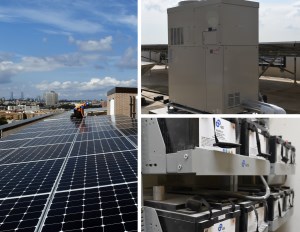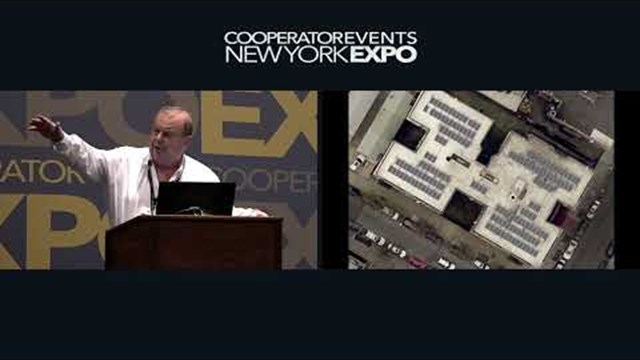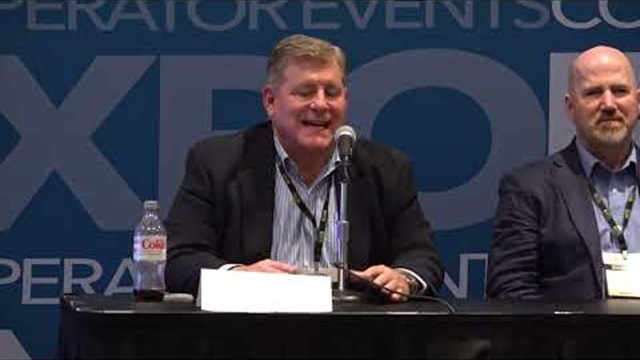
When it comes to energy, conservation is the watchword –
not just as pertains to usage (although definitely that!) but also to
cost. This may be especially true for New York City's condominium and
co-op buildings, in which volunteer boards must take multiple
considerations into account when figuring out an energy plan that's
right for the property.
As solutions like co-generation and solar paneling begin to overtake less efficient fossil fuels, it can be tough for an association to navigate this growing field. Bright Power, an energy and water management service provider out of New York City and Oakland, California, has shaken things up of late via the introduction of the Resilient Power Hub (RPH) – a micro-grid system that combines co-generation, solar PV, and reserve battery storage.
As the company recently installed the city's first RPH for residential use in The Bronx – with additional ones in Brooklyn and Queens on the way – The Cooperator spoke with James Hannah, VP of Client Services at Bright Power to discuss how this hybrid technology might be utilized by community associations going forward.
The Cooperator: How do you see RPH becoming increasingly viable as an energy option for condo and co-op properties going forward?
James Hannah: “They're likely looking for flexibility, both in terms of physical space constraints and of benefits to be obtained. When we were designing the RPH, we considered the combination of technology that would deliver utility bill savings for the 99.9% of the time when a grid was functional, while also providing backup power in a way that's cost effective. When you think about the tech – solar panels that produce electricity; co-generation, which is basically a small engine in the building that produces electricity and heat that runs on natural gas; and battery storage – you're talking about technologies that are increasingly scaleable in terms of generation and storage capacity.”
TC: How would the installation and layout go in a typical city residential building?
JH: “If it's a building where solar makes sense – which does not describe every condo or co-op in the city – that typically means a building with unobstructed southern exposure. You'd also want a roof with some open space, that's not all bulkheads or mechanical equipment. Panels would go on the roof, and then a co-generation system would typically go close to the domestic hot water boiler -- as it runs on natural gas and, as the engines combust, it's producing waste heat. In NYC, the chemistry of the battery – we're talking lead acid versus lithium ion – impacts where it will go. Lithium ion needs to go outside – a roof or a courtyard, perhaps – but lead acid can be sited inside the building.
TC: Can you retrofit RPH to an existing co-generation system?
JH: “Typically yes, but it can come down to space. But if they already have cogen or a solar PV system, those are the two out of three technologies in the RPH system that are most likely to be deployed at any time, so we could go in and retrofit their equipment with the RPH package.
“The main idea behind the RPH is that it gives you a lot more ability to reduce consumption and to also reduce demand charges. It's increasingly important in NYC as the electric grid infrastructure evolves to dispatch generation at specific times during the day; smoothing out your load profile to avoid peak loads. Which is another way of asking how you can create an electricity consumption profile where you're using as similar an amount of energy throughout a 24-hour period as possible, thereby avoiding big peaks in mornings and afternoons, when people are leaving for or coming home from work or school.”
TC: Tell us about these residential properties on which you have worked/are working.
JH: “In the Bronx, it's 126 units at 111 East 172nd Street, a new-construction affordable housing development.
“Then, the one in Queens is a significantly larger development from developer Omni New York LLC. It's another new construction that basically scales up what we did in the Bronx...something close to 400 units, a mixed-use building with quite a bit of retail. It's exciting because the scale of the system is much bigger, and the impact on the operating cost of the building will be quite significant.”
TC: When considering the battery, are people factoring in variables such as likelihood of an extreme weather event?
JH: “Yes. One of the first things we try to do with a client that's interested in RPH is to understand what their needs and priorities are when it comes to that type of tech, because resiliency might be their most prominent need, especially in areas that were heavily impacted during Hurricane Sandy. Anywhere in a flood zone or where power outage is a significant concern, the battery storage system may be something you want to size based on which systems you want to function during a blackout. During Sandy, for example, in the Rockaways, there was neither electricity nor natural gas, which would render a natural gas-fired generator or cogen system useless. So maybe you'd opt for a larger solar-tied battery system there that's designed more around back-up power capability while, in an area where you're maybe not as concerned with flooding, your battery system will be designed with an aim toward reducing utility bills via managing demand, where you're smoothing out those peak loads.”
TC: You've yet to install RPH in any condo or co-op associations, but should those where it's feasible consider it?
JH: “By combining the three aforementioned technologies, RPH ensures you're getting the most bang for your buck from each one, more benefits in terms of resiliency, more demand savings, more savings on your utility bills, and flexibility in terms of back-up power. Each technology has benefits of its own, but they also work in harmony with each other and the building to deliver the maximum benefit. And, in co-ops and condos, as opposed to rentals, these residents are invested and are likely to be living there long-term. By embracing the latest technology, you're investing in the future of the building.
“I'd also say that, as far as policy is concerned, the city and state are thinking about how they'll achieve their aggressive greenhouse gas emission reduction goals, and NYSERDA has already ceased offering incentives for installing cogen alone. They're considering encouraging pairing cogen with other technologies. So tides are changing. If you're just now doing a fuel conversion from oil to natural gas, or you're in a building where the boiler needs to be replaced, then it's a great time to be looking to incorporating this type of project into that larger heating plant effort that you'd already planned. Or even when replacing a roof. In associations it can take some time to get any initiative passed or project approved, so a good way to streamline things is to incorporate the energy upgrade into a larger project.”
Mike Odenthal is a staff writer/reporter with The Cooperator.









Leave a Comment